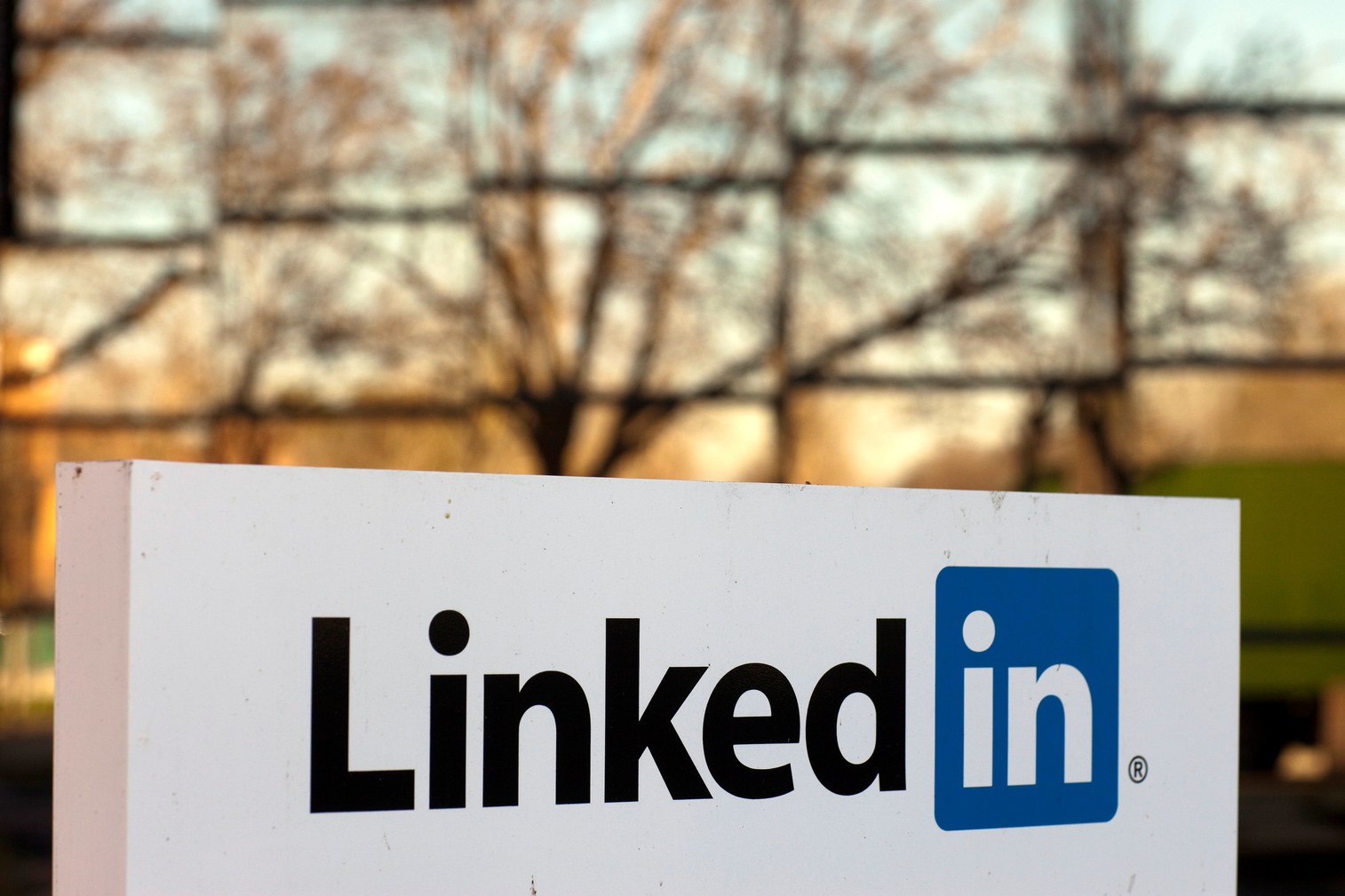
Blog posts on college admissions by Arjun Seth
How to manage stress?
High school is stressful, and college prep gets more competitive every year. Here are tips for identifying stress and taking action.
High school is stressful, and college prep gets more competitive every year. There’s a lot to handle, which research shows can cause chronic stress for up to 50% of students. In May 2017, The Wire talked about mental health in school students. The fact that more than 70% of all students feel constantly pressured about their academic performance with no unbiased help or outlet, led us to believe that writing about how to cope with stress during this time of the year to be imperative.
Read on if you’re interested in learning more about coping with high school stress and anxiety, reaching out to others for help, and staying as healthy as you can no matter what school and life throw at you.
When to Take Action: How to Read the Signs
What’s the difference between your standard, run-of-the-mill stress and stress you need to be worried about? Anytime you notice a change in your behavior or feelings, it’s time to take note. This can vary according to the person: sleeplessness or sleeping too much, eating habits that feel unhealthy, lack of interest in social activities or energy, slipping grades, and periods of extreme anger or sadness are all common signs of stress in teenagers. When it begins to feel out of your control, it’s time to talk about it.
It’s also important to know the difference between anxiety and stress. Stress is actually an external stimulus that can create internal feelings like worry and fear; people handle stress differently, and it looks different for different people. Anxiety is internalized feelings of worry and fear that don’t necessarily come from outside sources. Stress might be an upcoming test; anxiety could be worries about getting into college long before applications even go out. Both are important to watch, but it’ll be helpful for you to know whether your feelings are coming from outside or in.
Luckily for students, there are a ton of resources online to provide some basic research. Stay away from diagnosing yourself; in the absence of a professional’s watchful eye, it’s easy to get carried away reading about various illnesses and applying your own symptoms. But an online quiz could get the ball rolling.
Who to Contact When You Need Help
The first line of defense will be your parents, teachers, and other administrators at your school. Your school may, like many, be short-staffed, but they can at least point you in the direction of resources.
Your parents are an obvious one, but it’s critically important that you involve them to get them on board as you work to take care of yourself. Your parents may be just as stressed as you, but that also may mean that they can potentially empathize with you and help with research. You’ll also probably need their help implementing solutions, whether it means taking some time off or speaking with a professional.
Mental health professionals are another important group. Just as there are different types of doctors, there are different kinds of therapists, counselors, and psychologists, and different specialties. Do your research and remember you can “shop around” to find a professional that you connect with.
There can still be a stigma around mental health—in essence, that seeking help means there’s something wrong with you or that you couldn’t handle it yourself—but that’s an old way of thinking. Sometimes, the only way to feel less overwhelmed and begin changing your habits is by working with a professional.
Finally, there’s the people around you. There could be local communities and affinity groups that can help you feel less alone and may provide you with good role models. The same idea applies for peers or near-peers: finding people you admire, and asking them how they manage their time and feelings, can help you emulate their strategies to see if they’re right for you.
When to Take Action: How to Read the Signs
What’s the difference between your standard, run-of-the-mill stress and stress you need to be worried about? Anytime you notice a change in your behavior or feelings, it’s time to take note. This can vary according to the person: sleeplessness or sleeping too much, eating habits that feel unhealthy, lack of interest in social activities or energy, slipping grades, and periods of extreme anger or sadness are all common signs of stress in teenagers. When it begins to feel out of your control, it’s time to talk about it.
It’s also important to know the difference between anxiety and stress. Stress is actually an external stimulus that can create internal feelings like worry and fear; people handle stress differently, and it looks different for different people. Anxiety is internalized feelings of worry and fear that don’t necessarily come from outside sources. Stress might be an upcoming test; anxiety could be worries about getting into college long before applications even go out. Both are important to watch, but it’ll be helpful for you to know whether your feelings are coming from outside or in.
Luckily for students, there are a ton of resources online to provide some basic research. Stay away from diagnosing yourself; in the absence of a professional’s watchful eye, it’s easy to get carried away reading about various illnesses and applying your own symptoms. But an online quiz could get the ball rolling.
How You Can Help Yourself
Even with others by your side, it’s up to you to do what you need to take care of yourself. These tips go beyond simple awareness of the problem and focus instead on actions that will help you tackle them head-on.
1. Educate yourself. What does “mental wellness” even look like? What are some common struggles? What does going to a therapist look like? The more prepared you are, the less you’ll be scared to take action.
2. Prioritize your health and fitness. School’s already exhausting enough, so this might sound like an extra burden, but even if it’s light (yoga) or low-impact (attending a gym), the endorphins and physical benefits will offset the time it takes. Plus, stress can come from feeling powerless, and you can feel physically powerful through exercise.
3. Form a mental health group or awareness campaign. Remember those schools that prioritized mental wellbeing and stress relief? If your school doesn’t have activities like this, see if you can get one started, even if it’s just a club. Remember, up to 50% of students feel chronic, long-term stress; it’s essentially guaranteed you’re not the only one struggling. If your efforts really take off, you might even find your passion and a potential career.
4. If you can’t do it in a group, find balance and calm on your own. Meditation, guided imagery, breathing exercises: there are free tutorials on the web, apps on your phone, and lots of options to pick what’s right for you. There may also be in-person classes in your community.
5. Cultivate emotional readiness and autonomy. Resilience is essentially the ability to fail and experience hardship without letting it destroy you emotionally. Hardship is coming, so it’s best to be prepared for it. Plus, the sooner you can feel like an adult, the sooner you’ll feel prepared to meet adult challenges.
6. Limit the social media time. Social can be powerful for fostering connection, but it’s also an easy way to begin measuring yourself against others and to feel that you don’t measure up. Fear of missing out isn’t just a buzzword—it’s an actual problem that stems from our culture’s preoccupation with always living the best life and “having it all.” This isn’t possible, to be all things to all people and to do everything at once. So stop watching what others are doing and focus instead on yourself and what’s in front of you.
7. Change up your environment. Sometimes all you need is a change of pace and scenery to feel brand new. Staycations are terrific for this, and they can happen on a weekend or during some down time. Relaxation isn’t just for the summer months!
8. Self-advocate. It’s ok to ask for a day off from time to time; adults in the working world take “mental health days.” The same goes for if you’re struggling in class or activities. Say something, particularly if you trust the person in charge. You don’t have to proclaim it to the world, especially if you don’t want to share how you’re feeling with those around you, but chances are that this isn’t the first time they’ve worked with a stressed student.
These tips and tricks don’t address academic stress, come chat with us and we can help you with this stressful time.
Tips for writing a High School Resume
Writing a resume when you're a high school student who doesn't have much – or any – prior work experience can seem daunting. A good way to get started is to look at examples of resumes and read tips on what to include and how to format your resume.
Writing a resume when you're a high school student who doesn't have much – or any – prior work experience can seem daunting. A good way to get started is to look at examples of resumes and read tips on what to include and how to format your resume.
You probably have more information to put on your resume than you think. Experiences like babysitting, lawn mowing, and volunteering all help to show valuable work skills that employers want to see.
Just because you haven’t had a job like the one you are applying for, doesn’t mean you haven’t acquired the skills necessary to succeed.
High School Resume Examples
There are quite a few templates for a resume out there but here are a couple of websites with great examples:
- The Balance has a great example for a resume with no work experience
- AIE has a variety of templates and examples which are great too
Resume Writing Tips for High School Students
Here’s how to get started and what to include on your resume in addition to, or instead of, formal work experience.
Make an Outline. Make a quick list or outline of all possible experiences, paid and unpaid, to include in your resume before you try to find the right language to describe them.
Include Informal Work Experience. If you have formal paid work experience, certainly include it.
Otherwise, you can include informal work like babysitting, pet sitting, lawn mowing, shoveling snow, or anything else you've done to earn money.
Include All Your Activities. Since most high school students haven't held a lot of jobs, it is important to draw upon all aspects of your life which show you have the right character, work ethic, skills, and personality to succeed in a job. Mention your extracurricular activities, volunteer work, academics, and athletic pursuits. If you held any sort of leadership positions in these roles (such as secretary of a club or team captain), be sure to note this. For each item, include a bulleted list of your responsibilities and accomplishments.
Promote Your Attitude and Performance. Employers will be most interested in your work habits and attitude. They don't expect you to have a lot of experience. If you have perfect or near perfect attendance and are punctual for school and other commitments, you might include language like "Compiled a perfect (or near perfect) record for attendance" when describing an experience. If supervisors, teachers, or coaches have recognized you for a positive attitude or outstanding service, mention it in your description of the activity.
Mention Your Achievements. Employers look for staff who have a history of making positive contributions. Review each of your experiences and ask yourself if there are achievements in class, clubs, sports, or the workplace that you can include. If so, use verbs like enhanced, reorganized, increased, improved, initiated, upgraded, or expanded to show what you accomplished. Include any challenging advanced academic projects since this shows employers that you are intelligent and a hard worker.
Include Resume Skills. It's always a good idea to include skills related to the jobs for which you are applying. Here are examples of skills to include on your resume. You probably have many skills that you can include that you acquired in school, sports, youth groups, extra-curricular activities, or volunteering.
Use Action Verbs. Use active language when describing your experiences so you are portrayed in a dynamic way. Start the phrases in your descriptions with action verbs like organized, led, calculated, taught, served, trained, tutored, wrote, researched, inventoried, created, designed, drafted, and edited.
Keep it Short. Your resume doesn't need to be any longer than a page.
Include Your Name and Contact Information. Make sure the employer knows how to get in touch with you.
Proofread Your Draft. Review your draft very carefully before finalizing your document and make sure there are no spelling or grammatical errors. Ask your guidance counselor, parents, or a favorite teacher to critique your resume.
We hope this helps! Come chat with us and we will be happy to review your CV.
International admissions in the United States are declining. What does that mean for you?
There has been new numbers released recently about international admissions into US colleges and everyones seems to me talking about. Here is a breakdown of the situation and what it means for students applying this season.
There has been new numbers released recently about international admissions into US colleges and everyones seems to me talking about. Here is a breakdown of the situation and what it means for students applying this season.
What are the numbers?
The number of newly arriving international students declined an average 7 percent in fall 2017, with 45 percent of campuses reporting drops in new international enrollment, according to a survey of nearly 500 campuses across the country by the Institute of International Education.
Particularly hard hit are campuses in the Midwest, according to the institute. At the University of Iowa, overall international enrollment this fall was 3,564, down from 4,100 in 2015. While Iowa primarily lost Chinese students, the University of Central Missouri experienced a sharp decline this year in students from India. In the fall of 2016, the Warrensburg, Mo., university had 2,638 international students. This fall it has 944.
What are the reasons?
While most news claims for the decline to be due to increased unsafe situations and the muslim ban, there are a host of different reasons:
- Increasing competition from Canada, United Kingdom, and Australia
- Reduced scholarships for students from Brazil and Saudi Arabia
- Greater opportunities of employment post work in other countries
What does this mean for you?
If safety is your concern, the United States is safe or unsafe as any other country. Therefore there is no way to control for that. The coasts are a lot more liberal and diverse than some central states but for the most part, the country is still open to immigration.
Education in the US is still one the best in the world. If you want a top-notch education, the United States is still the best. However, if you want to move to another country i.e. live after school, Canada and Australia are better options.
While admissions rates are down, the numbers are still much higher than a decade ago because people are cognizant of the level of education they are getting.
We hope this helps you understand the situation a little better as you apply for college. Come chat with us if you want us to review your college list!
How to make a stellar LinkedIn account
Learn how to make an all-star LinkedIn profile and stand out amongst the crowd!
Since we were talking about LinkedIn this week, we thought of following up with another post on the best practices when making a LinkedIn account. While the linkedIn API is really good at telling you what all is needed here are top tips for high school students:
Photo:
You’ll need to include a photo to accompany your profile. This doesn’t necessarily have to be a professional photo, but it should be polished. Ideally, the background will be fairly plain, and you’ll be wearing a nice shirt or blouse. The photo should really just be a headshot, from about shoulder level up, and you should be looking at the camera. This is not the place for a group shot taken with your friends at the beach. Browse through other users’ profiles to see the style of photo most commonly included.
Headline:
Your headline is one sentence or phrase that captures what you’ve done and what you’re interested in doing in the future.
Summary:
Your summary will briefly describe what you’re passionate about doing, what you’re particularly skilled at, and what your goals are. It will basically expand on your headline to offer more specific details.
Experience:
This is essentially a resume of work experience. Include every job you’ve held so far, even if it was only part-time. Later, when you’re older and have amassed more work experience, you will trim down this section to include only jobs that are relevant to your career goals. For now, because you’re just getting started, you should include every job you’ve held.
For each job, include a brief description of your responsibilities and anything that you accomplished while there. You can even include photos or videos of your work if you have them, but keep in mind that these should serve as examples of the quality of work you’re capable of, not a series of selfies you took while serving as the beach parking attendant.
Honors and Awards:
Here, you can list any formal recognition you’ve received both in and out of school, from Employee of the Month at the local ice cream stand to National Merit Scholarship recipient. Don’t be afraid to brag in this section.
Projects:
This section should include any projects that you’ve worked on, in or out of school, in which you took a leadership role or otherwise excelled. For example, you could include your role as group leader in your school’s model bridge building competition even if your team didn’t win, or the darkroom that you built in your parent’s basement. This is the place to highlight unique achievements that were not formally recognized and do not fall into work or volunteer experiences.
Courses:
Don’t list every high school course you’ve ever taken here. Instead, focus on ones that highlight your skills and interests. For example, if you are interested in a career in computer tech, definitely include the coding course you took online or the AP Computer Science course you took at school.
Skills And Expertise:
Choose at least five skills that are relevant to both what you enjoy doing and the field you intend to pursue professionally. The people you connect with through LinkedIn will be able to endorse these skills to verify them for others who view your profile.
Organizations:
This is the section in which you list clubs or extracurriculars. Be sure to also include a brief description of what you did in each organization, especially if you took a leadership role.
Volunteer Experience:
Here, you’ll list any service projects or other volunteer work in which you’ve participated. Again, include a description of each experience. Even if you haven’t done much in terms of volunteer work, you can include any work for which you weren’t paid or compensated in this section, even if it was informal, like tutoring a younger student from your basketball team.
Education:
This section will usually start with your high school, but for older professionals it may not even start until college. You can include your high school classes and any summer programs or courses that you’ve taken outside of school.
Recommendations:
In this section, you can post recommendations that you’ve gathered from employers, teachers, or classmates. This section adds credibility to your profile. Never leave a job or a class in which you excelled and connected with the teacher without asking for a brief recommendation. You never know when it will come in handy.
Create A Customized Url:
When you open your LinkedIn account, you’ll be assigned a random web address for your LinkedIn profile. This will usually include a long line of numbers or random letters. You can customize the URL using these directions from the LinkedIn website.
Customizing your LinkedIn URL makes your profile easier to find and appears more polished and professional. It also shows that you have some technological savvy and pay attention to details.
Now I know these aren’t all the things that you can do on LinkedIn but if you just these, you will have a markedly competitive edge over the rest of the applicant pool. Do consider this and come chat with us if you have any more questions.
Why you should have a LinkedIn Account
Learn how you can increase your visibility on the web through the largest professional social networking sites in the world.
College application season is upon us, and as you scramble for recommendation letters and put the finishing touches on your college essays, you might not think about one application component that could make all the difference: a LinkedIn profile. The Common App does not require a student-submitted resume, so including a link to your LinkedIn profile in the "additional information" section could make all the difference.
Optically, the fact that you have a LinkedIn profile could set you apart from other applicants. According to Forbes, "Having a LinkedIn profile tells a potential new boss that you are serious about building a career, rather than just socializing online."
There are also legitimate career benefits. "If you know what field or company you want to work in, you can instantly search your connections for a link to a specific company, institution or field," Forbes reports. You could connect with alumni of your high school working in your desired field, and set up informational phone conversations.
Strategies for Using LinkedIn As a High School Student
Once you have your profile completed, you can begin using LinkedIn to establish a professional online presence. It might seem a little confusing at first, especially if you are the only one amongst your friends using this platform, but with a little practice and observation you’ll be up and running in no time.
Here are some tips to get started:
Pursue Networking
If you meet important professionals at a school event, through your parents or friends, or through a summer job, follow up soon afterwards with an invitation to connect on LinkedIn. Make sure to do so while you’re still fresh in this person’s mind. If you’re worried that they won’t remember you, include a brief message saying that it was pleasure to meet them at this specific event.
You should also reach out to successful alums from your high school, whether you knew them personally or not. This is particularly important if they’re in a field that you intend to pursue. Connecting through LinkedIn at a young age shows ambition, and lets others know that you’re thinking about your future career.
Don’t Overshare
LinkedIn is a unique social media platform. Spend some time observing the feed before you begin to share material. Content shared on LinkedIn is distinctly different from Facebook or other social media platforms. Keep it minimal and professionally relevant.
Know What To Brag About
You should definitely describe your accomplishments and awards, giving details about each. After all, you are actively trying to market yourself. Don’t include your grades, GPA, or test scores, though. These can come off as superficial achievements, since professionals are more interested in what you DO with your talents and knowledge than whether you have them in the first place.
Don’t Lie
This should go without saying, but as on your college, job, or scholarship applications, you should never lie or embellish the truth. Something that starts as a small embellishment could really catch up to you professionally in the future if it plays a role in you getting a job. Don’t put yourself in that position.
Create A Customized Url
When you open your LinkedIn account, you’ll be assigned a random web address for your LinkedIn profile. This will usually include a long line of numbers or random letters. You can customize the URL using these directions from the LinkedIn website.
Customizing your LinkedIn URL makes your profile easier to find and appears more polished and professional. It also shows that you have some technological savvy and pay attention to details. We hope this helps and will follow up with some best practices for LinkedIn. Come chat with us and learn how to go through this application process!
Scholarships for International Students
A list of US colleges that are generous towards international students.
With the rising price tags of college, there are fewer opportunities for scholarships for international student. While most private liberal arts college are generous with their funding, some of the larger schools are a lot less open to spending money on International students. Below are some exceptions to that story. These are also scholarships that our students have applied for and won, making us proficient in their unique applications as well.
Harvard University Scholarships: Harvard offers a good range of international scholarships for students from all over the globe. However, competition is fierce and there isn’t a scholarship offering for Indian students specifically.
Cornell University Scholarships: Cornell only offers need based scholarships and has no merit based prizes. However Tata has set up a $25 million dollar endowment for Indian students studying at Cornell.
Dartmouth College Scholarships: Dartmouth College meets the demonstrated need of all admitted undergraduates, including those from other countries. Dartmouth College has scholarships and loans available to international students, which includes an allowance for travel to the U.S..
Brandeis University Wien International Scholarship Program: Funding opportunity for high-achieving students with an interest in student community contribution
Emory University Needs-Based Scholarship Program: Funding opportunities for international students at Emory University. Students must demonstrate financial need.
New York University Wagner Scholarships: The merit scholarships are offered to a limited number of admitted students each application cycle, including international students. The scholarships are partial to full tuition scholarships ranging from $36,000-$70,000.
Michigan State University International Scholarships: Michigan University provides a limited number of scholarship and grants to deserving international students at the undergraduate and postgraduate level. These financial packages are not designed to support your full academic program at MSU.
Click here for access to a comprehensive list of college scholarship. For more scholarship information, come chat with us. We are more than happy to help out.
Will Admissions Counselors Look at your Social Media?
If you’re like most teens, you probably use social media on a daily basis. In fact, according to Facebook Insights there are more than 400 million active Facebook users in India, most of which check their platforms daily. As more and more of your personal information becomes present on online platforms, such as social media, you may be wondering if you should be worried about how colleges might perceive your online presence.
Your worry is not unfounded, as made evident by the 2017 revocation of a dozen Harvard acceptances after students were reported for making offensive jokes on a social media platform. Still, you may wonder to what extent exactly you should worry about your social media accounts being scrutinized by college admissions committees. Are they checking every account? Will they pour over every picture?
Luckily, this is no longer a mystery. In the 2017 Survey of College and University Admissions Directors, admissions representatives from around the country openly discussed their approaches to social media and their beliefs about whether or not your accounts should bear weight in the college application process. To learn more about how much your social media accounts are reviewed by college admissions committees, read on.
What Does This Mean For Your Social Media Use?
Since there is no complete consensus about social media use, you can’t really rely on any specific school to check or turn a blind eye to your social media presence. Instead, you should be aware that some colleges can and do check your social media accounts. Even if these colleges are in the minority, you should be prepared for the possibility that social media accounts may be checked, and that it’s always possible that someone could report any egregious social media use to an admissions committee.
You should also keep in mind that nothing online is truly private. Even if you think that you have your accounts locked down with restrictive privacy settings, there is always the chance that someone could screenshot your account and post it elsewhere.
Ultimately, you need to use your own good judgment about what you post online. Think of your social media accounts as a reflection of who you are, not just as a student and college applicant, but also as a person. Take some time to go through your past posts and clean them up, if necessary. You may not be able to completely scrub them from the the annals of Internet history, but you can at least ensure that they are no longer front and center on your current accounts.
Finally, remember that you don’t have total control over your own social media presence; the company you keep is important too. Friends and acquaintances can often tag you in posts or comment on material that you’ve posted. Consider limiting access to your content if you have contacts who habitually post unflattering or questionable content
Use Social Media to Your Advantage
Social media doesn’t need to have negative connotations. There are plenty of ways to leverage social media to your advantage, using it to polish your online presence and to connect with colleges and employers.
One way to leverage social media to your advantage is by using it to showcase your unique talents and passions. Choose a platform that aligns with your talents and goals, and then polish your account to reflect well on them. For example, if you’re into creative visual arts, you might create an Instagram account or YouTube channel dedicated to highlighting your work in this area.
Finally, LinkedIn is a great way to network, both academically and professionally. By creating a LinkedIn profile while you’re still in high school, you begin to lay the foundation for important connections and an established, professional online presence. Connect with college advisors, admissions representatives, and department heads to get the inside scoop at colleges on your list.
We’ll write a blog on how to use LinkedIn soon!
We hope this essay helped! College application season is now and come chat with us for all your admissions needs!
University of Virginia Supplemental Essays: "Oddball" questions
Welcome back to the UVA supplemental essays guide. Here are some brainstorming tips for the oddball prompts!
Answer one of the following questions in a half page or roughly 250 words.
What’s your favorite word and why?
This prompt has been posed by UVA for a few years in a row now, and it’s one that students usually love or hate. If this question immediately tickles your fancy and you have an idea for the word you’d like to highlight, go for it! If you look at this prompt and feel totally stuck, but still want to try answering it, try this trick: What might you tell admissions about yourself that they haven’t already heard from you in your Common App essay? Is there something in your history and experience worth expanding upon? Once you’ve identified what you want to discuss, think about what words might be helpful launch points for describing that experience and back into your “favorite word.” This is also a great strategy for choosing a word that is slightly less expected than those submitted by the average applicant.
We are a community with quirks, both in language and in traditions. Describe one of your quirks and why it is part of who you are.
This is another prompt that has appeared on past UVA applications. Most students we’ve worked with seem to have difficulty defining the word “quirk” as it applied to themselves. We like to think of a quirk as something you do regularly that is a bit bizarre or charming. Whatever you choose to highlight, it should reveal something to admissions about your character and personality. If you don’t think you have quirks, you’re probably just not attuned to them – they’re hard to identify from the inside. So maybe ask a parent or a friend if you do anything out of habit that makes them laugh or even shake their heads in mock disapproval. You’d be surprised what you do routinely and never notice!
Student self-governance, which encourages student investment and initiative, is a hallmark of the UVA culture. In her fourth year at UVA, Laura Nelson was inspired to create Flash Seminars, one-time classes which facilitate high-energy discussion about thought-provoking topics outside of traditional coursework. If you created a Flash Seminar, what idea would you explore and why?
Responding to this prompt is a fantastic way to showcase an area of interest or passion you have not had the opportunity to expand on already. Maybe you want to teach an entire course of the history of rock poster art. Or pizza-making. Can you combine two of the things you love and discuss the unusual ways in which these things intersect with and influence each other? Make sure you are answering the question and that you frame your subject of interest as something that would make for an interesting course. And try not to limit yourself to the academic – many subjects can be explored through an intellectual lens if you approach them in an unexpected and creative way.
UVA students paint messages on Beta Bridge when they want to share information with our community. What would you paint on Beta Bridge and why is this your message?
This final prompt choice is glorious in its infinite potential. You can choose to elaborate on anything about which you feel passionately here. Do you want to send a message to your fellow students about the environment? Maybe you want to rally students to join you at a demonstration of some kind. What is important to you, and what might be important to communicate to other people in your community? Essays responding to this prompt tend to lean in the direction of activism and community engagement, but don’t feel limited to these angles – anything you want to share with other UVA students is fair game, as long as it is reflective of something about which you feel strongly. After all, you’re trying to communicate what it important to you, both to the community and to admissions.
This brings us to an end of the UVA series. We hope you liked it! Give us a call or come on over if you want us to look at your essays!
University of Viginia Supplemental essays: "Why college?"
University of Virginia is a public institution that was founded in 1819. It has a total undergraduate enrollment of 16,331, its setting is suburban, and the campus size is 1,682 acres. It utilizes a semester-based academic calendar. University of Virginia's ranking in the 2018 edition of Best Colleges is National Universities, 25. Some of the greatest minds graduated from UVA, from Edgar Alan Poe to Tina Fey.
UVA has two supplemental questions: the why, and the oddball essay. Lets start with the why question!
1. We are looking for passionate students to join our diverse community of scholars, researchers, and artists. Answer the question that corresponds to the school/program to which you are applying in a half page or roughly 250 words.
The first of UVA’s two required essays is specific to the school within UVA to which you will be applying. In most cases, the prompt bears some relation to the classic “Why” essay, which probes for the reasons you are a good fit for a school and vice versa. When you search for answers to this prompt, think about why you want to study what you want to study. What past experiences and commitments will show admissions that you are truly committed to the field you’re interested in. And how might you act on your passions and interests?
The small curve ball in these UVA “Why” prompts is that many of them ask you to demonstrate your interest by discussing a topic or providing a specific example of something that inspires you within your chosen field. In these cases, you won’t be talking about why you want to pursue your chosen field in the abstract, but rather you will prove your interest on the spot with your examination of the subject you choose.
College of Arts and Sciences
What work of art, music, science, mathematics, or literature has surprised, unsettled, or challenged you, and in what way?
This is one of those curve balls we were just referring to. In asking you about an academic or artistic work that has captured your attention, UVA is asking you to put your love of the arts and sciences on display (which in turn will prove your interest in the school you’re applying to). These kinds of questions can be tricky if specific examples don’t immediately come to mind. Try to avoid the obvious (no Great Gatsby, please) unless you have a hyper-personal connection to the material at hand. Instead, search for concepts, ideas, art and stories that ignited your curiosity, made you fall in love with a subject, or pushed you to new academic heights. We recommend going through your bookshelf and old school notebooks to start to collect ideas worth expanding upon.
School of Engineering and Applied Sciences
If you were given funding for a small engineering project that would make everyday life better for one friend or family member, what would you design?
Again, with this prompt UVA wants to see your interest in a subject in action. If you are an aspiring engineering and applied sciences student and those fields are a good fit for your passions and skills, you will very likely be excited by this prompt. After all, it takes a creative and innovative mind to invent something that improves the lives of others – and as an engineer or applied scientist that is exactly what you will be signing up to do. We recommend starting this prompt by interviewing some of the people that are close to you and asking them about the simple annoyances and inconveniences of their daily lives. This should give you some initial ideas for problems that need solving so you can put on your thinking cap and invent some thoughtful solutions. Again, try to stay away from the obvious here. And do your research to make sure the thing you’re trying to create hasn’t already been invented!
School of Architecture
Describe an instance or place where you have been inspired by architecture or design.
Answering this prompt requires an interesting combo of creative interest in action and traditional why essay elements. In asking you to describe an inspiration, admissions is not simply asking you to identify something that has motivated your interest – they also want to know WHY the landmark, building, or other element of design struck your fancy. Feel free to expand upon how being exposed to creativity pushed you to explore your own talents. Another helpful hint: using terminology that showcases a command of design and architecture concepts can be really helpful in showing admissions your commitment to the field.
This brings us to the end of the first installment of the UVA supplemental essays guide! Head over to the University of Virginia category link and read more on the oddball essays!
Welcome back to the UVA supplemental essays guide. Here are some brainstorming tips for the oddball prompts!
Overcoming Writer's Block
We know that writing essays non stop is hard and can result in a complete brain drain. Now college essays aren't particularly hard but because they are so vital to the college acceptance process, the pressure to ace them can seem a lot more.
Every student functions differently under pressure, some shine because they want to perform and some stumble and find themselves in a void. When that happens, track back and follow these steps!
- If you haven’t found anything extraordinary about your life on which to write your essay, why not start with the small stuff? Make a list of every mundane and boring thing you have ever had to do. Taking out the garbage? Check. Changing the cat’s litter? Check. Make sure your essay about your mundane and boring activity makes a deeply reflective and insightful statement about you and shows that you are anything but
mundane and boring. - Read five different news articles. Take the fifth word from each first sentence and rearrange the words into a sentence that best describes you to create the hook of your essay. If that unique opening sentence of your essay doesn’t immediately capture the attention of the admissions officer, I’m not sure what will.
- Admissions officers want to get to know the real you, so what better way to do that than to start your essay by writing about your dream? And I don’t mean your life-long dream to become a doctor, I mean last night’s dream. Whether it was about driving down an endless road or fighting crime in the sewer system of New York City, your dreams give an unadulterated, subconscious look at the real you. What more could they possibly ask for?
- If all else fails, go on your dream school’s website and look through it until you feel motivated enough to write that amazing essay. Eat ice cream from the tub. Have a good sob or two. It happens to the best of us.
I hope this helps. Comment below with any questions or come chat with us. We are always happy to help!










